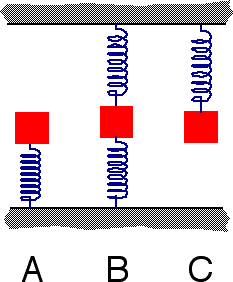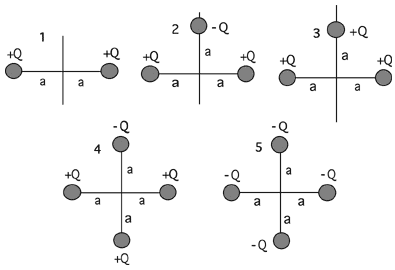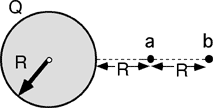Goal: Reason with potential energy
Source: UMPERG-ctqpe68

Consider three spring systems having identical springs and
masses. Which of the 3 systems has the largest amount of stored energy?
- A
- B
- C
- A and C
- All have the same potential energy
- Cannot be determined





Commentary:
Answer
(2) Students often forget to include the gravitational potential
energy and also have difficulty selecting a good reference point.